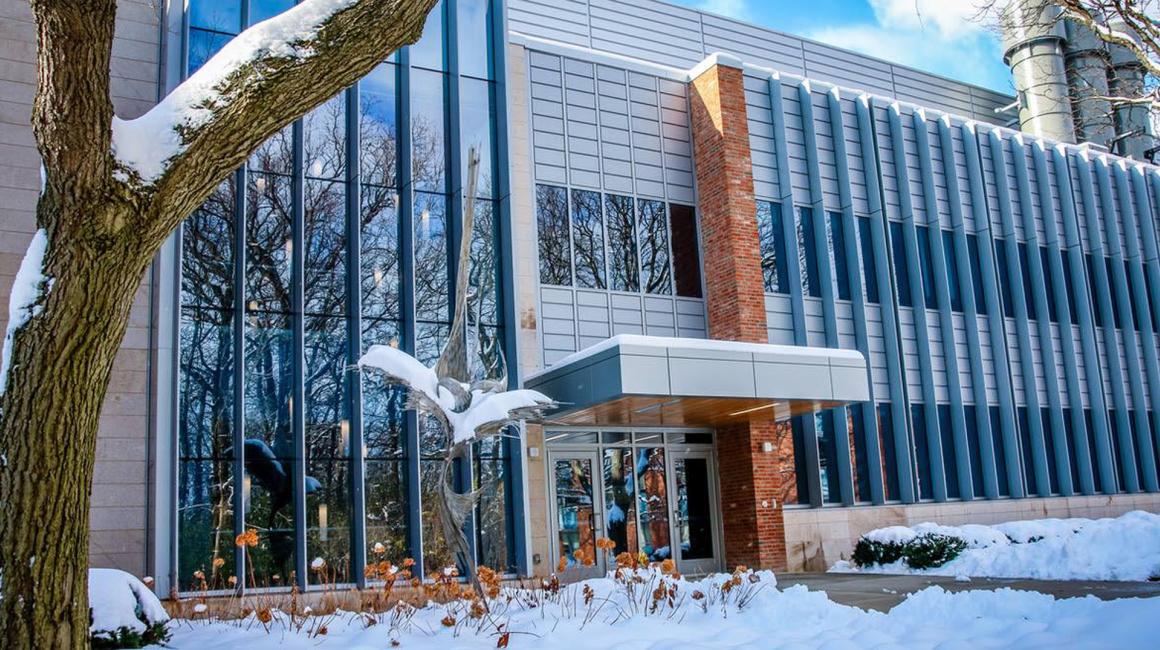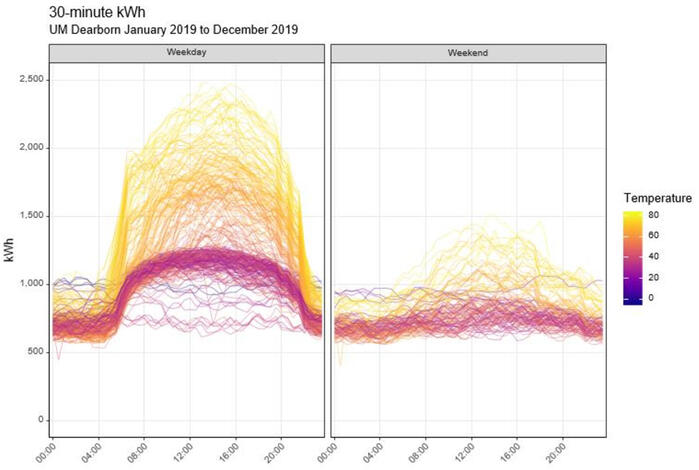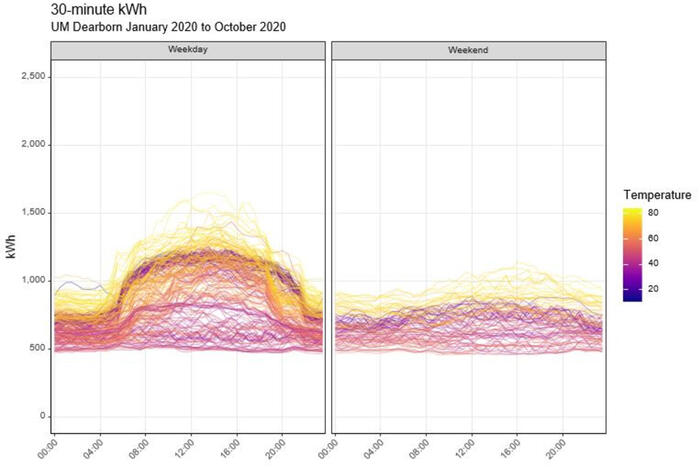
This article was originally published on January 25, 2021.
Fewer people studying and working on campus has meant that UM-Dearborn’s facilities teams have been able to reduce the energy footprint of nearly every campus building. Now, we have our first glimpse of what that means for the university’s bottom line. All in all, when you add up savings from electricity, natural gas and water-sewer bills, Executive Director for Facilities Operations Carol Glick says the university has saved more than $570,000 on its utilities since the start of the pandemic.
As you can see from the visualizations below, a lot of the savings thus far have come from reduced electricity usage, particularly during the summer months. Each squiggly line on the graph represents the electricity used in a single day. They’re sorted into “weekdays” and “weekends” because we already have robust energy conservation practices in place for weekends, when there are fewer people on campus.
Here’s what 2019’s electricity use looked like:

And here’s 2020’s (through October):

The really dramatic thing you’ll notice is that the mountains of squiggly yellow lines in 2019 are more like hills in 2020. That’s mainly because with fewer people on campus and hence fewer buildings operating at full capacity, we used a lot less air conditioning over the summer months. (Warm temperature days are represented by yellow lines.)
Breaking down the numbers, from April to October, Glick calculates we saved $365,000 on our electricity bill, which is about 26 percent of typical usage. In natural gas, we saved $62,000, or 29 percent. And in water and sewer fees, we saved $146,000, or 58 percent of typical usage. That adds up to $573,000 in utility savings over just seven months. During the heating months, Glick says you can expect the natural gas savings to add significantly to the overall total.
Achieving these savings has taken a lot of carefully thought out effort by members of the facilities teams. Some buildings, like the Administration Building, have fairly simple systems and a homogeneous office environment, so reducing its energy footprint largely involved turning off lights and resetting the thermostat. But for buildings with lots of faculty labs, sensitive equipment or biological specimens, or where socially distanced lab classes were still being taught, the team had to take a more nuanced approach. In those cases, they carefully fine tuned HVAC systems for zone heating or cooling, while still maintaining safe levels of air circulation.
One of the most interesting challenges has been water. Without people regularly using sinks, toilets and water fountains, water hangs around longer in plumbing systems. When it does, it tends to accumulate higher concentrations of things like iron and copper. So Glick says one of the new weekly routines is flushing all the water systems in all the buildings. In practice, that means a few folks go building by building, flushing all the toilets, running the drinking fountains, and opening up all the faucets.
“We are so fortunate because we have tradespeople who bring both experience and a lot of commitment,” Glick says. “Our folks know every corner of these buildings so they know how to squeeze every last bit of efficiency out of a system without sacrificing the health of the building. I think it’s one of the true advantages of being a smaller campus, because we have a small group of people who work really closely together and take a lot of pride in what they’re doing. This campus is their community, and I think you’re seeing one of the results of that.”





